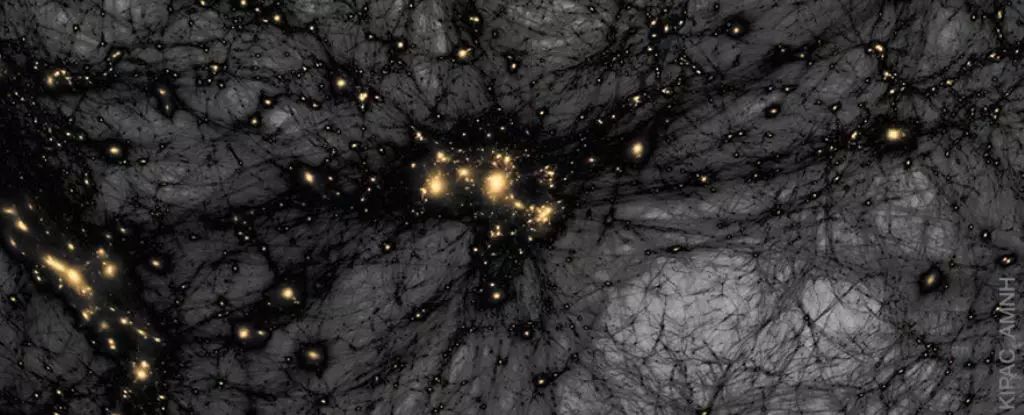In the realm of cosmology, few issues loom larger than the Hubble tension, a perplexing discrepancy that plagues our understanding of the Universe’s expansion. Observations conducted in the early stages of cosmic history suggest a slower rate of acceleration compared to more recent measurements based closer to home. This contradiction unearths a fundamental mystery at the heart of the widely accepted cosmological model: How can the Universe be expanding, yet yield contrasting rates of acceleration based on different observations?
The implications are profound and invite a spectrum of hypotheses that question the very fabric of our cosmological principles. Could it be that Einstein’s theory of general relativity is fundamentally flawed? Might we find that the fabled dark matter—slippery and elusive—simply does not exist? Rather provocatively, some even muse over the notion that time itself is not a constant, or even entertain the radical idea that our Universe is in a state of rotation. This environment of intellectual curiosity bears the hallmark of genuine scientific investigation, yet the quest for answers has not yielded definitive results.
Dark Matter: A Long-Standing Enigma
As one of the cornerstones of modern cosmology, dark matter continues to tantalize physicists. Despite strong observational evidence suggesting its existence—made manifest through gravitational effects that are observable but not emit light—dark matter remains a ghostly presence, as it has eluded any form of direct detection. The scientific community is largely bifurcated between those who strongly advocate for the existence of dark matter and those who vehemently argue for modifications to gravitational theory, often discrediting dark matter as fundamentally flawed.
In this context, a novel approach emerges: the idea of dark matter not just as a static component of the Universe but as a potentially dynamic entity that evolves over time. This theory stands as a fresh perspective amidst the backdrop of more traditional views—opening the door to a range of possibilities that were previously unconsidered.
Evolving Dark Matter: A Breakthrough Concept
Recently, some visionary thinkers have proposed models that explore the concept of evolving dark matter in tandem with evolving dark energy. Interestingly, this duality suggests that the evolution of cosmic conditions does not occur in isolation. The interplay between dark energy and dark matter could yield illuminating insights into the Hubble tension dilemma. In examining this evolving dynamic, researchers have drawn parallels between dark matter and neutrinos—particles that possess mass but engage minimally with electromagnetic forces.
It’s an enthralling notion: if neutrinos demonstrate mass oscillation, what’s to suggest that cold dark matter particles couldn’t display a similar oscillatory behavior? This leads to the tantalizing hypothesis that a fraction of cold dark matter could be dynamic, paving the way for a more robust model that fits the observational data while explaining the Hubble tension.
The authors suggest a compelling scenario: approximately 15% of cold dark matter could be oscillatory, while the remaining 85% remains standard. This hypothesis allows for a harmonious integration of various cosmic observations while addressing the apparent discord in expansion rates.
Embracing the Unknown: The Future of Cosmology
While this evolving dark matter model is categorized as a ‘toy model’—one that provides a broad framework without definitive specifics—it undeniably invites further exploration and debate within the scientific community. The potential for oscillatory dark matter expands the horizons of theoretical physics, implying that our understanding of the cosmos might be fundamentally more complex than previously imagined.
Indeed, we occupy a moment in time where the boundaries of physics are being redefined. Every groundbreaking theory invites scrutiny and skepticism, necessary elements in the pursuit of scientific truth. However, the possibility that dark matter might evolve stands as a testament to human curiosity—a reminder that some of the most intriguing questions dwell in the areas of our understanding that are still cloaked in mystery.
With evolving concepts in dark matter gaining traction, it becomes increasingly clear that our current cosmological models may require a paradigm shift. As we venture further down this uncharted pathway, one thing is certain: the Universe’s secrets are tantalizingly within reach, waiting to be unraveled through innovative thinking and daring hypotheses.

